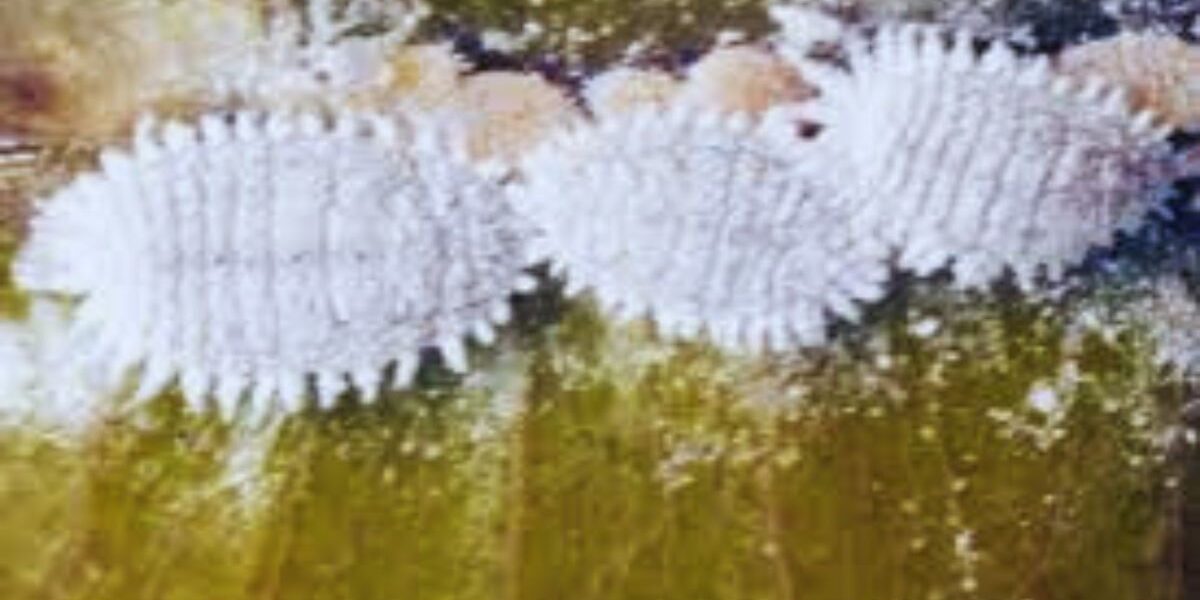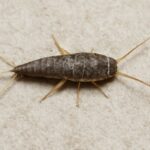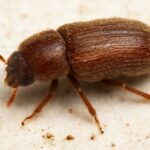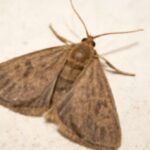How to Control Root Mealybug Control

The root mealybug can often be found clinging to the roots of garden plants because this is where feeding takes place, causing severe damage. They use their piercing-sucking mouthparts to pierce the plant’s root system, extracting the plant’s sap. Symptoms of root mealybugs include.
- The plant loses its vigor and becomes stunted.
- Infected plants will wilt.
- Plant leaves will turn yellow and then brown.
- The plant will experience premature leaf drop.
- Flowering plants will experience bud drop and bloom failure.
- If plants are not treated will eventually die.
My Personal Story of Successfully Treating Root Mealybug
My first encounter with root mealybugs was many years ago as a foreman working on a 2-acre estate located at Lyford Cay, an upscale community. This particular garden plant had no visual signs of being infected by insects. I did not physically see any insects, yet the symptoms showed that something was wrong because the plant was deteriorating. This garden plant did not have a disease, nor was there any environmental factor that was influencing these symptoms. I did my best each day to preserve that plant trying everything that I had learned both in the classroom and on the field but yet to no avail, then the thought came to me to uproot this plant, and to my amazement, I discovered lots of tiny snow-white insects attached to the plant’s root and hence was my discovery of the root mealybugs. I did my research, took the proper measures, and guess what, I got to the root of the problem, uprooted or successfully brought control by treating this particular plant species.
As an Amazon Associate I earn from qualifying purchases
Life Lesson
In all my previous years, both in the classroom and on the field, I would have never imagined that a family or group of mealybugs lived below ground. This discovery was new to me—earth-shaking, if I can use that word—and it was a discovery that my instructors never taught me.
Root Mealybug Identification
Root mealybugs are white, they are about 2.4 to 3.9 millimeters long. These mealybugs possess slender wax filaments that form a sort of netting over some individuals. In severe infestation, root mealybugs will secrete small amounts of wax, causing the soil to become somewhat bluish.
Root Mealybug Life Cycle
Root mealybugs can live up to four weeks or two months, depending on the substrate and soil temperature. The female can lay fifteen eggs a day. The larvae, which can be found in the cotton, hatch within forty-eight hours of being released.
Container-Grown Plant Treatments
Root mealybugs are much easier to spot when growing plants from containers, vs growing plants directly from the soil. Once the plant is removed from the container and inspection is done if the issue is root mealybugs, you will see them gathered around the root ball. Control measures involve removing the plant from the container, placing the plant’s root ball in a plastic bag, and removing the infested soil.
Once the soil is removed from the root ball into the plastic bag, tie or seal the bag very tightly and properly dispose of it in a trash can. This soil should not be reused, especially if seeking to build a compost pile. Bring a pot of water to a boil. The water temperature should be about 120 degrees F Pour the hot water very carefully into a bucket, and let the plant roots sit in the bucket of hot water for about 10 minutes. This will further kill off any remaining root mealybugs along with their eggs. Remove your plant from the bucket of hot water, then repot it with fresh soil. The container should be sterilized with hot water or washed with a solution of bleach and water before adding fresh soil. Another control method is to dilute hydrogen peroxide into a container of water, followed by drenching your plant Or another option is to use Miracle-Gro Indoor Potting Mix . It’s designed to prevent pests, fungus gnats, and other soil-borne issues that mealybugs thrive in.
For safe root drenching, many gardeners use Bonide Systemic Houseplant Insect Control. It targets hidden pests like mealybugs and keeps working for weeks.
Field Grown Plant Treatments
Field-grown plants or plants that are growing directly in the ground can be a bit of a challenge; small plants can be removed, and the root ball should be inspected. Once it is discovered that the issue is root mealybugs, a soil drench can be applied, such as organophosphates or Imidacloprid. Heat treatments and systemic insecticide applications have also been shown to be effective. Before applying insecticides, read and follow the manufacturer’s directions for proper use and the best results. Another control method is to dilute hydrogen peroxide into a container of water, followed by drenching your plant.
Some Plant Species that are a Favorite of Root Mealybugs
There are a host of plants that the root mealybugs feed on; here are just a few host plants.
- Iris.
- Begonia.
- Chrysanthemum.
- Streptocarpus.
- African violet.
- Gladiolus.
- Arctostaphlos.
- Ferns.
- Numerous other flowers and shrubs.
- Polgala.
- Anemone.
- Achillea.
- Ornamental grasses.
Additional Information
- Before purchasing plants from your garden nursery, inspect the soil and the root ball to ensure that it is root mealybug-free
- Once you have taken your plant or plants home, ensure that the containers are sterilized if it was used on previous occasions to pot plants
- The use of warm water and dish liquid can get the job done. Wash the container thoroughly
- Infested plants should be removed from healthy plants when treating, and returned after the treatment process
- When repotting container plants, use fresh soil only.
Conclusion
If your home garden or house plant is showing these symptoms and you have ruled out everything else, then it is time to do a further inspection to look for signs of this garden pest that lives below the ground. Why should your garden plants have to suffer or be at the mercy of these pests when you can strike back, giving your plant a fighting chance to survive? Your garden plants are depending on you to get them through this time so they can regain their bloom and luster, so go for it as we continue to win the war on garden insect pests.









